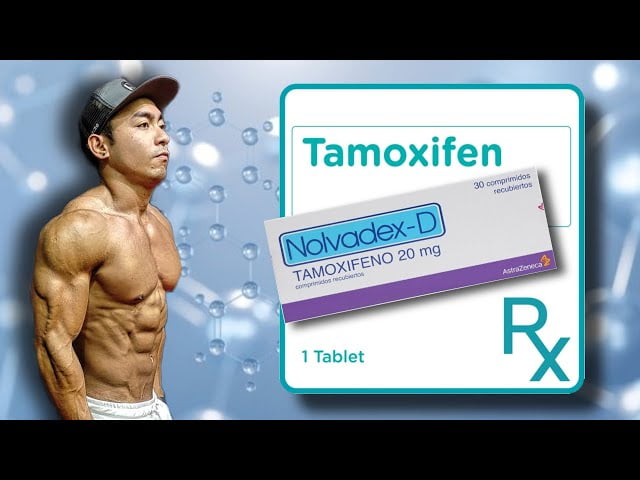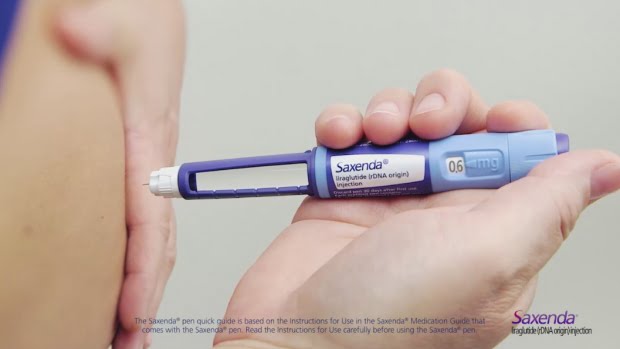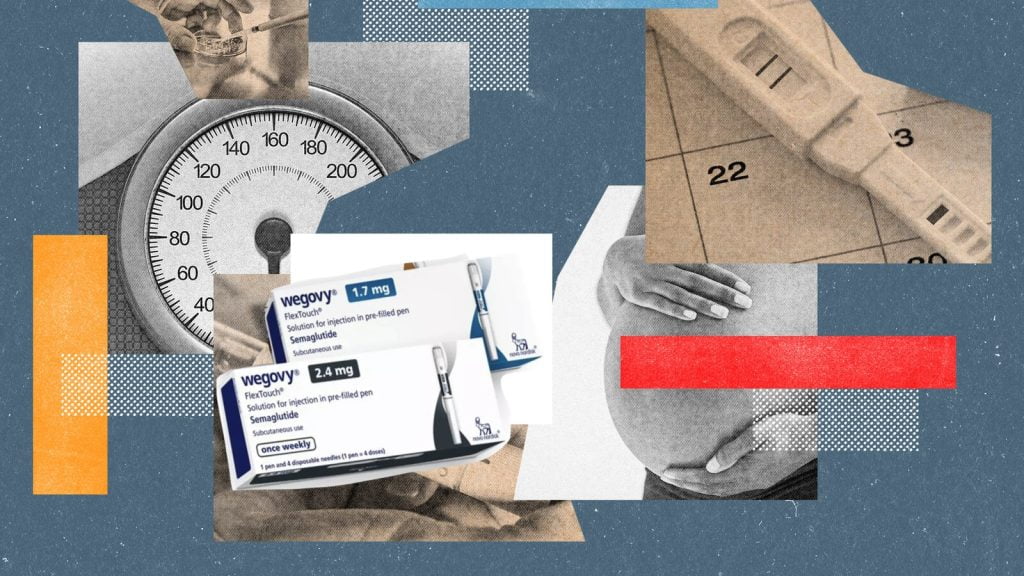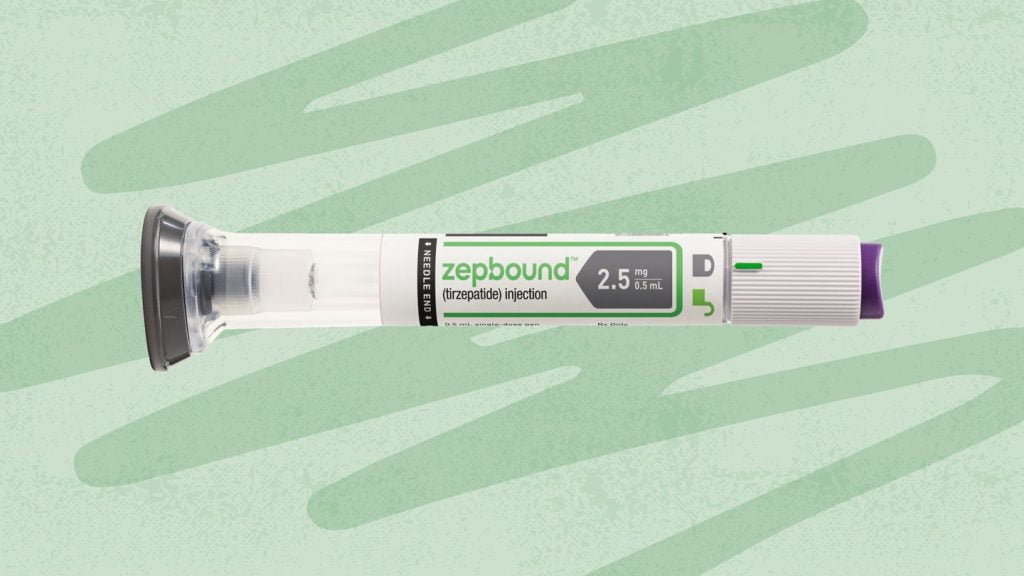Mounjaro Dosage Guide for Weight Loss

Introduction to Mounjaro for Weight Loss Mounjaro (tirzepatide) is primarily used to treat type 2 diabetes, but it has also shown significant promise for weight loss. This medication works by mimicking the effects of hormones that regulate appetite and insulin, thereby helping to reduce food intake and improve blood sugar control. Many patients have turned to Mounjaro for weight loss, experiencing gradual and steady progress over time. Mounjaro Dosage and Administration The dosage of Mounjaro for weight loss starts at 2.5 mg once weekly. After four weeks, the dose can be increased to 5 mg once weekly, depending on the patient’s response and tolerance. Further adjustments may be made, with the maximum recommended dose being 15 mg once weekly. This gradual increase helps minimize potential side effects of Mounjaro, such as nausea, diarrhea, decreased appetite, vomiting, constipation, indigestion, and abdominal pain. More serious side effects might include pancreatitis, kidney problems, allergic reactions, and gallbladder disease, which should be closely monitored by a healthcare provider. Weight Loss Progress and Savings Options Patients often experience Mounjaro weight loss in phases. During the first month, weight loss is usually gradual, with more noticeable results appearing after two to three months. By six months, significant weight loss can be observed, with some patients losing up to 20% of their body weight after one year of treatment. To assist with the cost of this medication, Eli Lilly offers a Mounjaro savings card program. Patients can apply for the savings card through the official Mounjaro website or consult their healthcare provider to see if they are eligible, thereby reducing the financial burden of the treatment. Managing Availability and Side Effects There have been reports of Mounjaro shortages due to high demand and manufacturing constraints. Patients who have difficulty obtaining the medication should consult their healthcare provider for alternatives or potential solutions. Managing the side effects of Mounjaro is crucial for maintaining the effectiveness of the treatment. Regular check-ups and open communication with a healthcare provider can help mitigate any adverse effects and ensure that the patient continues to experience positive Mounjaro weight loss by week. Monitoring progress and adjusting the dosage as needed will help achieve the best results while minimizing discomfort. By understanding the proper dosage, potential side effects, and weight loss expectations, patients can effectively use Mounjaro as a weight loss aid.
What You Need to Know About Tamoxifen in Bodybuilding

Welcome to InsulinReview, where we dive into the science and application of various medications and supplements. In this article, we’ll explore the use of Tamoxifen in bodybuilding. While Tamoxifen is primarily known for its role in treating breast cancer, it has found a niche in the bodybuilding community. Let’s unpack the reasons behind its popularity, proper dosages, and potential side effects. Understanding Tamoxifen in Bodybuilding Tamoxifen, often known by its brand name Nolvadex, is a Selective Estrogen Receptor Modulator (SERM). In the bodybuilding world, it’s primarily used to counteract the estrogenic side effects of anabolic steroids. When bodybuilders use steroids, their bodies may convert excess testosterone into estrogen, leading to unwanted effects like gynecomastia (development of breast tissue in men). This is where Tamoxifen comes into play. Tamoxifen Dosage for Bodybuilding The appropriate tamoxifen dosage for bodybuilding varies depending on the individual’s needs and the specific cycle they are on. Here are some common guidelines: When to Take Tamoxifen in Bodybuilding When to take tamoxifen bodybuilding largely depends on the individual’s steroid cycle. It’s usually started during PCT, which begins after the steroid cycle ends. The duration can range from 4 to 6 weeks, but it’s crucial to follow a tailored plan based on your specific regimen and health status. Tamoxifen and Weight Loss There’s interest in the potential tamoxifen weight loss bodybuilding effects. While Tamoxifen itself isn’t a weight loss drug, by managing estrogen levels and reducing water retention, it can contribute to a leaner physique, which is often a goal in bodybuilding. Tamoxifen for Gynecomastia (Gyno) One of the primary uses of tamoxifen for gyno on cycle is to prevent or treat gynecomastia. Tamoxifen dosage for gyno typically involves higher doses initially (20-40 mg per day) until symptoms subside, then tapering down. Tamoxifen PCT (Post-Cycle Therapy) Tamoxifen PCT dosage is critical for restoring natural testosterone production after a steroid cycle. A common tamoxifen dose pct starts at 20-40 mg per day for the first few weeks, then gradually decreases. Tamoxifen Cycle and Side Effects When considering a tamoxifen cycle, it’s essential to understand the potential side effects. These can include: However, when used correctly, many bodybuilders find that the benefits outweigh the risks. Is Tamoxifen a Steroid? A common question is tamoxifen a steroid? No, it is not. Tamoxifen is a SERM, which works by blocking estrogen receptors. Conclusion Tamoxifen plays a significant role in the bodybuilding community for its ability to manage estrogenic side effects and aid in post-cycle recovery. However, its use should be carefully managed and ideally supervised by a healthcare professional to mitigate risks and maximize benefits. Key Takeaways For more in-depth reviews and expert insights on various medications and supplements, stay tuned to InsulinReview. Your health journey is our priority!
Fast-Food Restaurants That Are Safe for Diabetics

Navigating the world of fast food can be challenging for diabetics, but it’s not impossible. Many fast-food restaurants now offer diabetic-friendly options that make it easier to maintain blood sugar levels while on the go. This article explores some of the best fast food for diabetics, offering practical advice on how to make healthier choices at popular chains. Diabetic Friendly Fast Food Options McDonald’s What can a diabetic eat at McDonald’s? McDonald’s offers several options that can fit into a diabetic diet. Opt for a grilled chicken sandwich without the bun, or a salad with grilled chicken. Avoid sugary drinks and fries, and opt for water or a diet soda instead. Taco Bell Taco Bell for diabetics Taco Bell can be a good choice with some modifications. Choose items like the Power Menu Bowl with chicken or steak, but ask for no rice and beans to reduce the carb count. The Fresco-style soft tacos with chicken or beef are also a lower-carb option. Subway Best fast food for diabetes Subway offers a variety of salads and bowls that can be customized to fit a diabetic diet. Load up on non-starchy vegetables, lean proteins like turkey or chicken, and avoid high-carb ingredients like bread and sugary dressings. Best Restaurants for Diabetics Chipotle Chipotle’s customizable menu allows for plenty of diabetic-friendly choices. Opt for a salad bowl with lots of greens, fajita vegetables, and a protein source like chicken or steak. Skip the rice and beans to keep the carb count low. Chick-fil-A Chick-fil-A offers grilled chicken nuggets, which are a great low-carb option. Pair them with a side salad or a fruit cup instead of fries. The Grilled Chicken Sandwich can also be a good choice if you skip the bun. Specific Foods to Consider Can Diabetics Eat Steak? Can diabetics eat steak? Yes, diabetics can eat steak, as it is a source of protein and has minimal carbs. However, be mindful of portion sizes and avoid high-fat cuts. Grilled or broiled steak is preferable over fried or heavily sauced versions. Can Diabetics Eat Pickles? Can diabetics eat pickles? Pickles can be a good low-carb snack for diabetics. They are low in calories and carbs, but watch out for the sodium content, as some pickles can be high in salt. Can Diabetics Eat Fried Chicken? Can diabetics eat fried chicken? Fried chicken is not the best option for diabetics due to the breading and frying process, which adds carbs and unhealthy fats. Opt for grilled chicken when available to reduce the impact on blood sugar levels. Diabetic Fast Food Choices Best Fast Food Lunch for Diabetics When choosing a fast food lunch, focus on grilled proteins, lots of vegetables, and minimal carbs. Salads with grilled chicken, lettuce-wrapped burgers, or protein-style sandwiches are all good options. Fast Food Options for Diabetics Other good options include: Restaurants for Diabetics Look for restaurants that offer customizable options, fresh ingredients, and low-carb choices. Avoid places known for high-carb, high-sugar foods, and always ask for nutritional information if available. Conclusion Finding diabetic-friendly fast food options is easier than ever with a bit of planning and knowledge. Choose grilled over fried, load up on vegetables, and avoid high-carb and sugary items to maintain blood sugar levels while enjoying a meal out. Key Takeaways By making mindful choices, diabetics can enjoy fast food without compromising their health. Always consult with your healthcare provider for personalized dietary advice.
Wegovy Injection Guide: Where and How to Inject?

At InsulinReview, we aim to provide comprehensive and reliable information about medications and their administration for effective diabetes management. This guide focuses on Wegovy (semaglutide), a medication approved for weight loss. We will discuss the best places for Wegovy injection, the best time of day to take Wegovy, and detailed instructions on how to inject Wegovy properly. Best Place for Wegovy Injection The best place for Wegovy injection is typically in areas with a layer of fat between the skin and muscle. These areas include: When selecting the injection site, rotate between these areas to avoid skin irritation or lipodystrophy (abnormal distribution of fat). Best Time of Day to Take Wegovy Determining the best time of day to take Wegovy can depend on your daily routine. Here are some considerations: How Do You Inject Wegovy? Proper technique is crucial for effective administration. Here’s a step-by-step guide on how to inject Wegovy: Injection Sites for Wegovy As mentioned, the injection sites for Wegovy include: Where to Inject Wegovy for Best Results To achieve the best results, follow these tips: Key Takeaways Conclusion Proper administration of Wegovy injections is crucial for its effectiveness in weight loss and diabetes management. By following these guidelines and consulting with your healthcare provider, you can ensure you’re using Wegovy safely and effectively. For more detailed reviews and expert advice on diabetes medications, visit InsulinReview, your trusted source for comprehensive medical information.
How to Get Wegovy for Weight Loss Online in 2024

At InsulinReview, we provide detailed insights and reviews on diabetes and weight management products. One of the most discussed and sought-after treatments in recent years is Wegovy, a prescription medication designed to aid weight loss. As more people look for convenient ways to obtain medications, getting Wegovy online has become a popular topic. This article will guide you through the process of obtaining Wegovy for weight loss online in 2024, addressing all relevant concerns and requirements. Wegovy: An Overview Wegovy (semaglutide) is a medication approved by the FDA for weight management in adults with obesity or overweight conditions accompanied by weight-related medical issues. It works by mimicking a hormone that targets areas of the brain involved in regulating appetite and food intake. Wegovy Where to Buy For those wondering “Wegovy where to buy“, the medication can be purchased at most major pharmacies with a valid prescription. However, many patients are now turning to online options for greater convenience and privacy. How to Get Wegovy How to get Wegovy involves a few steps, starting with obtaining a prescription from a healthcare provider. The process includes an initial consultation to determine if Wegovy is appropriate for your weight management needs. When Will Wegovy Be Available Again Due to high demand, you might find yourself asking, “When will Wegovy be available again?” Availability can fluctuate, but it is generally restocked regularly. Checking with multiple pharmacies and online providers can help you find available stock more quickly. Wegovy Prescription To start your journey, you’ll need a Wegovy prescription. This can be obtained through a consultation with your healthcare provider, who will evaluate your health and determine if Wegovy is right for you. Wegovy Online Prescription Obtaining a Wegovy online prescription is a convenient option for many. Telehealth services can connect you with licensed healthcare providers who can evaluate your eligibility for Wegovy and issue a prescription electronically. Get Wegovy Online Once you have your prescription, you can get Wegovy online through various certified online pharmacies. Ensure that the pharmacy is reputable and requires a valid prescription to avoid counterfeit products. Get Wegovy Prescription Online To get Wegovy prescription online, use telehealth services that offer consultations with licensed healthcare providers. These services provide a convenient way to discuss your weight loss goals and obtain a prescription without visiting a doctor’s office in person. Criteria for Wegovy The criteria for Wegovy typically include having a BMI of 30 or higher, or 27 or higher with at least one weight-related medical condition such as hypertension, type 2 diabetes, or high cholesterol. Your healthcare provider will assess these criteria during your consultation. Wegovy Telehealth Using Wegovy telehealth services can streamline the process of obtaining this medication. These services provide an opportunity to consult with healthcare providers remotely, making it easier to fit into your schedule. Telehealth for Wegovy Telehealth for Wegovy involves virtual appointments where you can discuss your health, weight loss goals, and suitability for Wegovy with a healthcare provider. If deemed appropriate, they can prescribe Wegovy and guide you on how to use it effectively. Telehealth Wegovy Prescription A telehealth Wegovy prescription is issued after a thorough evaluation by a telehealth provider. This method is increasingly popular due to its convenience and efficiency. Key Takeaways Conclusion Securing Wegovy for weight loss has become more accessible through online and telehealth services. At InsulinReview, we emphasize the importance of consulting with healthcare providers to ensure that Wegovy is right for you. Using telehealth services to obtain your prescription can save time and make the process more convenient. Remember to verify the legitimacy of online pharmacies before making any purchases to ensure your safety and the efficacy of the medication. For more information and expert reviews on Wegovy and other weight management solutions, visit InsulinReview.
Semaglutide and Pregnancy: What You Need to Know

Semaglutide, the active ingredient in Wegovy, has sparked interest for its potential in weight management. However, for women who are pregnant or planning a pregnancy, understanding the implications of semaglutide use is essential. In this article, we’ll explore the impact of semaglutide on pregnancy, fertility, and the menstrual cycle. Semaglutide and Pregnancy The safety of semaglutide during pregnancy has not been established, and its use is not recommended for pregnant individuals. Animal studies have shown adverse effects on fetal development when semaglutide was administered during pregnancy, including fetal malformations and reduced fetal weight. Therefore, semaglutide should be discontinued if a woman becomes pregnant. Can You Take Semaglutide While Pregnant? Due to the lack of safety data, semaglutide should not be taken during pregnancy. If you are pregnant or planning to become pregnant, discuss alternative treatment options with your healthcare provider. Semaglutide and Fertility While semaglutide’s effects on fertility have not been extensively studied, there is currently no evidence to suggest that it negatively impacts fertility in women. However, it’s essential to consider the potential risks and benefits of semaglutide use if you’re planning to conceive or are experiencing fertility issues. Semaglutide and Menstrual Cycle Some individuals may experience changes in their menstrual cycle while taking semaglutide. These changes could include irregular periods, spotting, or changes in menstrual flow. If you notice any significant changes in your menstrual cycle while using semaglutide, consult with your healthcare provider for further evaluation. Conclusion While semaglutide shows promise for weight management, its use during pregnancy is not recommended due to potential risks to fetal development. If you’re considering semaglutide and are of childbearing age or planning a pregnancy, discuss your options with your healthcare provider to ensure the safest and most appropriate treatment approach for you.
Saxenda and Obesity: A Comprehensive Review

Obesity is a significant public health issue affecting millions worldwide, with serious implications for overall health and well-being. One medication that has garnered attention for its potential to aid in weight management is Saxenda. In this article, we at InsulinReview will provide an in-depth analysis of Saxenda, its FDA approval, its effectiveness in treating obesity, and key milestones in its development. Saxenda FDA Approval: A Milestone in Weight Management Saxenda, manufactured by Novo Nordisk, received FDA approval as a treatment for obesity, marking a significant step forward in the fight against this chronic condition. The Saxenda FDA approval was granted on December 23, 2014. This approval was based on comprehensive clinical trials demonstrating its efficacy and safety in helping individuals achieve and maintain weight loss. Saxenda Approved for Weight Loss: How It Works Saxenda is approved for weight loss in adults with a body mass index (BMI) of 30 or higher, or a BMI of 27 or higher with at least one weight-related condition, such as hypertension or type 2 diabetes. The medication contains liraglutide, a GLP-1 receptor agonist, which helps regulate appetite and reduce caloric intake by mimicking the hormone GLP-1 that controls hunger. When Was Liraglutide Approved? Liraglutide, the active ingredient in Saxenda, was first approved by the FDA for the treatment of type 2 diabetes under the brand name Victoza in January 2010. Its approval for weight management under the brand name Saxenda in December 2014 marked its expansion into a new therapeutic area. Saxenda Release Date and Key Milestones The Saxenda release date followed shortly after its FDA approval, with the medication becoming available to patients in early 2015. Since then, Saxenda has been widely used as part of a comprehensive weight management program that includes a reduced-calorie diet and increased physical activity. When was Saxenda approved? As noted, Saxenda was approved on December 23, 2014, for chronic weight management, providing a new tool for healthcare providers to support patients struggling with obesity. What Does Saxenda Treat? What does Saxenda treat? Saxenda is specifically indicated for weight management in adults and adolescents aged 12-17 years with obesity. It is used to assist patients in losing weight and maintaining weight loss when combined with a reduced-calorie diet and increased physical activity. Manufacturer of Saxenda The manufacturer of Saxenda is Novo Nordisk, a global healthcare company with a strong focus on diabetes care and obesity management. Novo Nordisk has a long-standing commitment to improving health outcomes for people with chronic conditions and continues to invest in research and development to enhance the efficacy and safety of its products. Key Takeaways Conclusion Saxenda has proven to be a valuable medication in the management of obesity, providing a new avenue for patients seeking effective weight loss solutions. Its approval and subsequent release have offered hope to many struggling with obesity, underscoring the importance of continued innovation and research in this field. For more detailed reviews and patient experiences, visit InsulinReview, your trusted source for medical insights and updates.
Side Effects of Jardiance and How to Manage Them

At InsulinReview, we aim to provide comprehensive and reliable information about medications for diabetes and related conditions. Jardiance (empagliflozin) is a commonly prescribed medication for managing type 2 diabetes and has also been approved for heart failure. This article will explore the side effects of Jardiance and provide tips on how to manage them effectively. What is Jardiance Used For? Jardiance is primarily used to manage type 2 diabetes by helping lower blood sugar levels. Additionally, Jardiance is used for reducing the risk of cardiovascular death in adults with type 2 diabetes and established cardiovascular disease. Recently, it has also been approved for treating heart failure, making it a versatile medication in diabetes and cardiology. Common Side Effects of Jardiance Understanding the side effects of Jardiance is crucial for managing them effectively. Common side effects include: These side effects can often be managed with appropriate lifestyle changes and preventive measures. Worst Side Effects of Jardiance While Jardiance is generally well-tolerated, there are more severe side effects to be aware of. The worst side effects of Jardiance include: If you experience any of these severe side effects, seek medical attention immediately. Managing Jardiance Side Effects To manage the side effects of Jardiance, consider the following tips: Jardiance for Heart Failure Jardiance has been shown to be effective in reducing the risk of hospitalization and death in patients with heart failure. The benefits of Jardiance for heart failure include improved cardiovascular outcomes and reduced symptoms of heart failure. Empagliflozin Side Effects As the active ingredient in Jardiance, empagliflozin side effects are similar and include urinary tract infections, increased urination, and dehydration. Monitoring for these side effects and discussing them with your healthcare provider can help manage them effectively. Jardiance Weight Loss Many patients report Jardiance weight loss as a beneficial side effect. This weight loss can be attributed to the loss of excess glucose through urine, leading to a reduction in body weight. Does Jardiance Cause Weight Loss? Yes, does Jardiance cause weight loss is a common question. The answer is yes, due to its mechanism of action that causes excess glucose to be expelled in the urine, leading to a reduction in overall body weight. What Happens if You Take Jardiance at Night? What happens if you take Jardiance at night? While Jardiance can be taken at any time of day, it is generally recommended to take it in the morning. Taking it at night may lead to more frequent urination during the night, which can disrupt sleep. Is Jardiance the Same as Ozempic? Is Jardiance the same as Ozempic? No, they are different medications. Jardiance (empagliflozin) is a sodium-glucose co-transporter-2 (SGLT2) inhibitor, while Ozempic (semaglutide) is a glucagon-like peptide-1 (GLP-1) receptor agonist. Both are used for type 2 diabetes but work in different ways. Jardiance Side Effects on Eyes Jardiance side effects on eyes are rare, but there have been reports of vision changes. If you experience any changes in your vision, contact your healthcare provider immediately. Foods to Avoid While Taking Jardiance When taking Jardiance, it’s important to consider your diet. While there are no specific foods to avoid while taking Jardiance, maintaining a balanced diet and avoiding high-sugar foods can help manage blood sugar levels more effectively. Key Takeaways Conclusion Understanding the side effects of Jardiance and how to manage them can significantly improve your experience with this medication. At InsulinReview, we strive to provide detailed, reliable information to help you make informed decisions about your health. For more insights and expert reviews on diabetes medications, visit InsulinReview, your trusted source for comprehensive medical information.
Wegovy and Pregnancy: Understanding the Risks and Considerations

Wegovy, a medication containing semaglutide, has shown promising results for weight management in adults. However, for women of childbearing age or those planning a pregnancy, it’s essential to understand the potential risks and considerations associated with Wegovy use during pregnancy. In this article, we’ll explore the impact of Wegovy on pregnancy, fertility, and the menstrual cycle. Wegovy and Pregnancy The safety of Wegovy during pregnancy has not been established, and its use is not recommended for pregnant individuals. Animal studies have shown adverse effects on fetal development, including fetal malformations and reduced fetal weight, when semaglutide was administered during pregnancy. Therefore, Wegovy should be discontinued if a woman becomes pregnant. Does Wegovy Affect Fertility? While Wegovy’s effects on fertility have not been extensively studied, there is currently no evidence to suggest that it negatively impacts fertility in women. However, it’s essential to consider the potential risks and benefits of Wegovy use if you’re planning to conceive or are experiencing difficulties with fertility. Can You Take Wegovy While Pregnant? Due to the lack of safety data, Wegovy should not be taken during pregnancy. If you are pregnant or planning to become pregnant, discuss alternative weight management strategies with your healthcare provider. Wegovy and Menstrual Cycle Some individuals may experience changes in their menstrual cycle while taking Wegovy. These changes could include irregular periods, spotting, or changes in menstrual flow. If you notice any significant changes in your menstrual cycle while using Wegovy, consult with your healthcare provider for further evaluation. Conclusion While Wegovy offers promising results for weight management, its use during pregnancy is not recommended due to potential risks to fetal development. If you’re considering Wegovy and are of childbearing age or planning a pregnancy, discuss your options with your healthcare provider to ensure the safest and most appropriate treatment approach for you.
Zepbound: New Medication for Chronic Weight Management

In this comprehensive blog post, we delve into Zepbound, a groundbreaking new medication for chronic weight management. Whether you’re familiar with weight loss treatments or seeking effective solutions for managing your weight, understanding Zepbound’s uses, side effects, dosage, and alternatives is essential for making informed decisions about your health. Understanding Zepbound Zepbound is a medication specifically designed to address the challenges of chronic weight management. Its innovative formulation contains key ingredients that target metabolic pathways involved in appetite regulation, insulin sensitivity, and fat metabolism. By addressing these factors, Zepbound offers a promising approach to achieving sustainable weight loss and improving overall health. Uses of Zepbound Zepbound is prescribed for individuals struggling with obesity or overweight conditions, particularly those with associated health risks such as diabetes, hypertension, and cardiovascular disease. By promoting weight loss and improving metabolic health, Zepbound can help reduce the risk of complications and enhance overall well-being. Mechanism of Action The mechanism of action of Zepbound involves targeting multiple pathways involved in weight regulation. By enhancing feelings of fullness, reducing appetite, and improving insulin sensitivity, Zepbound helps individuals achieve and maintain a healthier body weight. This multifaceted approach makes it a promising option for long-term weight management. Potential Benefits of Zepbound Users of Zepbound have reported significant benefits, including: Side Effects and Considerations While Zepbound offers promising benefits, it’s essential to be aware of potential side effects and considerations. Common side effects may include nausea, diarrhea, and gastrointestinal discomfort. Additionally, individuals with certain medical conditions or taking specific medications may need to exercise caution when using Zepbound. Consulting with a healthcare provider is crucial to ensure safe and effective use of this medication. Alternatives to Zepbound While Zepbound may be an effective option for some individuals, it’s not the only approach to weight management. Alternative treatments may include lifestyle modifications such as diet and exercise, behavioral therapy, or other weight loss medications. Consulting with a healthcare provider can help determine the most suitable treatment plan based on individual needs and preferences. Conclusion Zepbound represents a significant advancement in the field of chronic weight management, offering individuals struggling with obesity a promising solution for achieving their weight loss goals. By understanding its uses, mechanism of action, and potential benefits, individuals can make informed decisions about incorporating Zepbound into their treatment plan. As with any medication, consulting with a healthcare provider is essential to ensure safe and effective use. With Zepbound, individuals have a new tool in their arsenal for managing their weight and improving their overall health and well-being.
